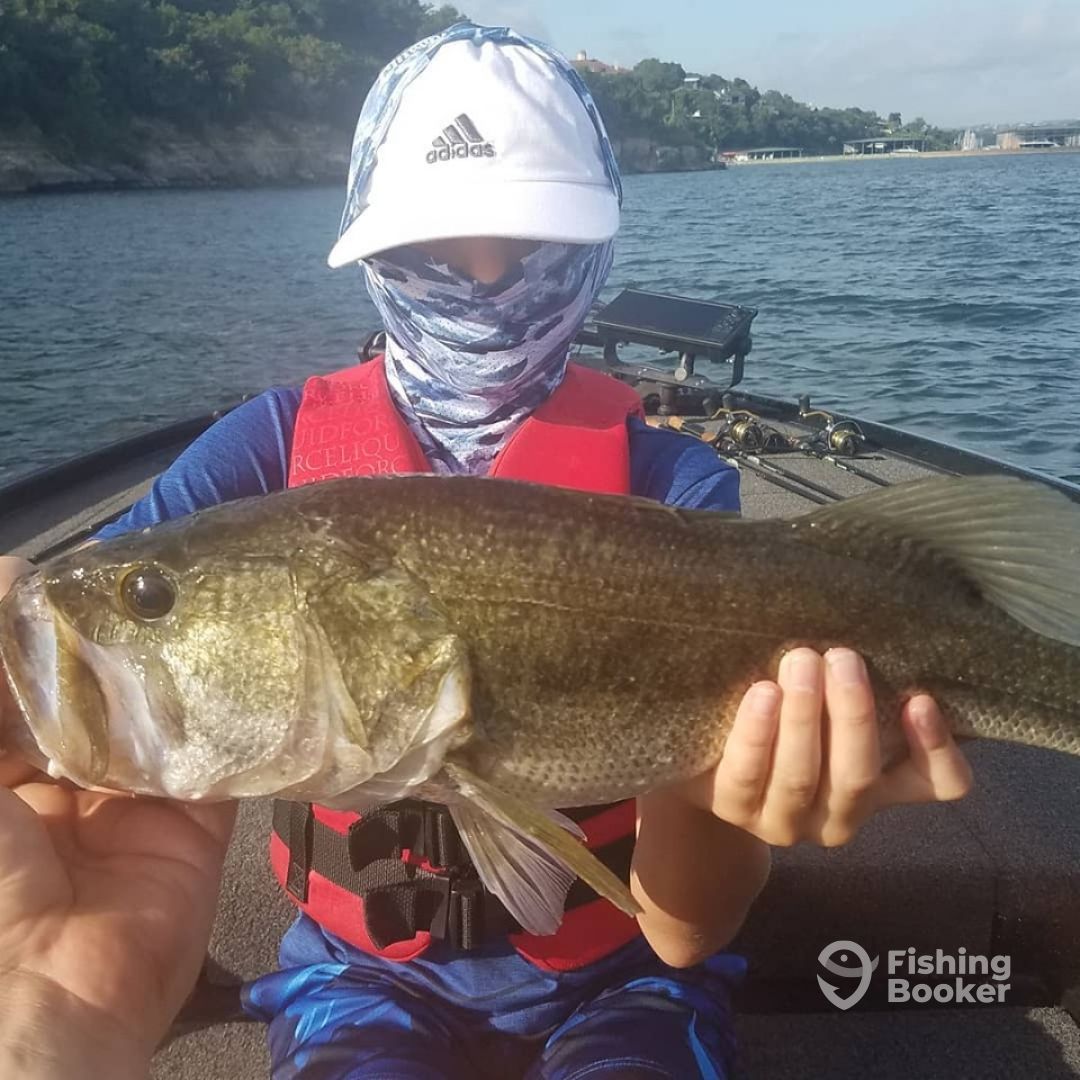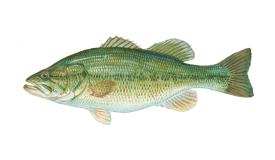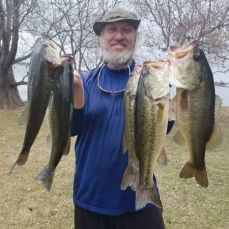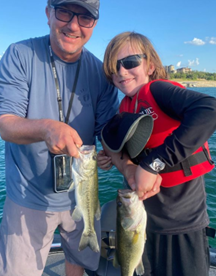Fishing Deeper for Mid-Summer Bass
Julio 20, 2019
Austin
2 fotos


Bass (Largemouth)
Trip Summary
Trip Summary
As the heat of summer takes hold here in Central Texas, the water temperature has stabilized near the upper 80s on Lake Travis. In the past few weeks, the largemouth bass have settled down and can be found in their deep-water summertime hangouts. This time of year, it really pays off to have good quality electronics like Garmin PanOptix on the boat, as well as an understanding of seasonal fishing patterns. Bass tend to be more lethargic in the hot summer waters and won’t necessarily go chasing down their food. We have caught some schooling bass recently, but the more predictable bite has been on deeper offshore structures. This week I’ve had the opportunity to guide for a nice variety of clients who have a wide range of skill levels: from seasoned saltwater anglers to youth anglers to everything in between.
I rarely have the chance to get my line wet while I’m guiding so it’s a treat for me when the anglers have some skills. In between netting my clients’ catches I can try a few different baits, which is then more knowledge I can share with my clients.
Our first stop on Friday was a place I checkout out the night before the trip, and it was loaded with bass. An underwater point in the 25 to 35 feet deep range was holding large numbers of bait and bass, but these bass were slow and not in the feeding mood so a slow presentation along the bottom was critical. I had my clients slow down their retrieve by doing very long and slow sweeps with the rod, then slowly reeling up the slack. They were a bit too quick on the hook set so I had them wait until the rod loaded up, and that did the trick! In the four-hour evening trip, they were about to boat almost 20 bass of up to 3 pounds using a variety of baits. However, the go-to baits were bottom baits that were retrieved very slowly so dragging a Texas-rigged trick worm, shaky head with an imitation craw, or a drop shot were the big producers.
Saturday morning’s trip was a close repeat of the previous two days. I had a few youths on board, so I was mostly helping them cast, netting their catches, and giving them a few instructions followed by supporting congratulations as they set the hook! We stuck with drop shot rigs, since I believe they are the easiest for younger anglers to set the hook. They did lose a few fish, but everyone managed multiple catches of both largemouth and Guadalupe bass. Towards the end of the trip we tried a point that was 20 feet on top and had a sheer drop down to 60 feet on the windy side. I could see the bass stacked up on top with my Garmin PanOptix. I positioned the boat in about 60 feet while both boys made casts across the top of the point. That’s when I saw one of the rods bend so hard the tip went into the water. I don’t think he every had a chance to set the hook, but it looked big. We were excited when the youngster threw back in the same spot and hooked up a 3.8# largemouth bass. It was probably the same bass that came back for a second attempt!
There are many factors that can make fishing during the dog days of summer a success. Knowledge of fishing patterns, as well as what’s under the water, are key to catching bass when the water temp is in the upper-80s. Let Captain Randal with Central Texas Fishing Guide help guide you to success in fishing!
Tight Lines.




